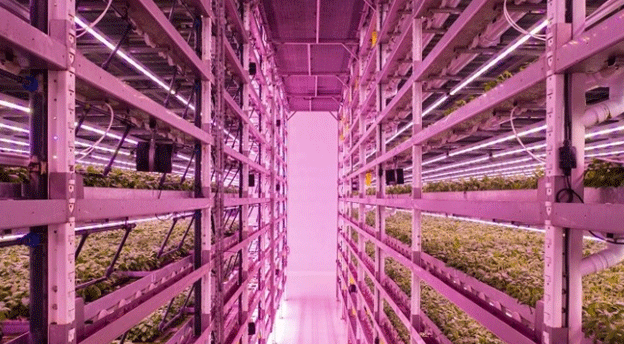Vertical farming, a concept pioneered by Professor Dickson Despommier in 1999, has transformed urban agriculture by enabling food production in dense cities, deserts, and regions with limited arable land. Yet, despite its benefits, the high energy demands required to maintain ideal growing conditions have kept vertical farming financially challenging. Scientists at Wageningen University in the Netherlands are now investigating a promising solution: dynamically controlled environments that adapt lighting and temperature to the natural rhythms of plants, potentially cutting energy usage and costs significantly.
The Energy Challenge in Vertical Farming
Since vertical farms operate indoors, they must rely entirely on artificial light, climate control, and irrigation systems to simulate optimal growing conditions. However, this constant energy demand results in high operating costs, making vertical farming less viable in areas with fluctuating energy prices. Dr. Elias Kaiser, a researcher at Wageningen University, emphasizes that while vertical farms bring production closer to consumers and protect crops from weather-related risks, electricity costs remain one of the biggest obstacles to their long-term sustainability.
To address this, the Wageningen research team focused on how plants naturally respond to diurnal (day-night) cycles and other environmental changes, leveraging these biological rhythms to reduce the need for constant lighting and climate control. The research, published in Frontiers in Science, showed that by tuning light intensity and climate settings to plant needs at specific times, vertical farms could achieve energy savings without compromising crop quality or yield.
Dynamic Control: A Smart Solution for Energy Optimization
Professor Leo Marcelis, the senior author of the Wageningen study, explains that traditional vertical farms run on constant environmental settings, an approach that demands high energy to maintain. Instead, the research proposes a system that adapts to plant physiological needs, using sensors and algorithms to provide only as much energy as the plants require at any given time.
The team developed a model to test smart lighting adjustments, aiming to keep photosynthesis consistent throughout the day. By using an optimization algorithm, they were able to reduce energy costs by 12% while maintaining carbon fixation—a process crucial for plant growth. This approach also allows farms to maximize production during times when energy is cheaper, potentially reducing costs even further.
Benefits of Vertical Farming with Dynamic Environmental Control
Vertical farming has long been celebrated for its ability to grow crops in small spaces, using soilless methods like hydroponics and aeroponics, and recycling up to 95% of water. With the potential for energy reduction through dynamic control, these benefits are even more pronounced:
- Maximized Land and Resource Efficiency: Vertical farms can occupy a small footprint with stacked layers reaching up to 12 meters in height. This minimizes the need for arable land and allows farms to be established in urban and brownfield areas, reducing the carbon footprint associated with food transport.
- Enhanced Food Security and Resilience: By locating farms near consumers, vertical farming can help ensure reliable food supplies, especially as climate change increases the frequency of extreme weather events. Traditional crops are often impacted by droughts, floods, and wildfires, but vertical farms provide a controlled environment that protects against these risks.
- Increased Crop Variety: Controlled environments enable the cultivation of over 250 crop varieties, from leafy greens and herbs to fruits and exotic vegetables, adding diversity to local food supplies.
Andrew Lloyd, CEO of vertical farming technology company Intelligent Growth Solutions (IGS), highlights the importance of modular vertical farms that can be customized and expanded based on demand. “At its simplest, vertical farming lets you grow crops in a smaller footprint, which is crucial in a world where arable land is under increasing pressure,” he says.
Vertical farming has the potential to be a game-changer for sustainable urban agriculture, but its high energy requirements have been a persistent challenge. The new dynamic environmental control approach from Wageningen University demonstrates that vertical farms can reduce energy costs while still producing high-quality, consistent yields. By shifting to energy-efficient practices that align with plant physiology, vertical farms could soon become more viable and scalable worldwide, bringing fresh, locally grown produce to urban populations and addressing key concerns around food security and environmental sustainability.
For farmers, agronomists, and agricultural engineers, the insights from this research provide a path forward in adapting vertical farming to meet both economic and ecological needs. By blending innovative science with traditional farming principles, vertical farming can advance toward a more sustainable future, fulfilling its promise of fresh, local produce without the steep energy price tag.











